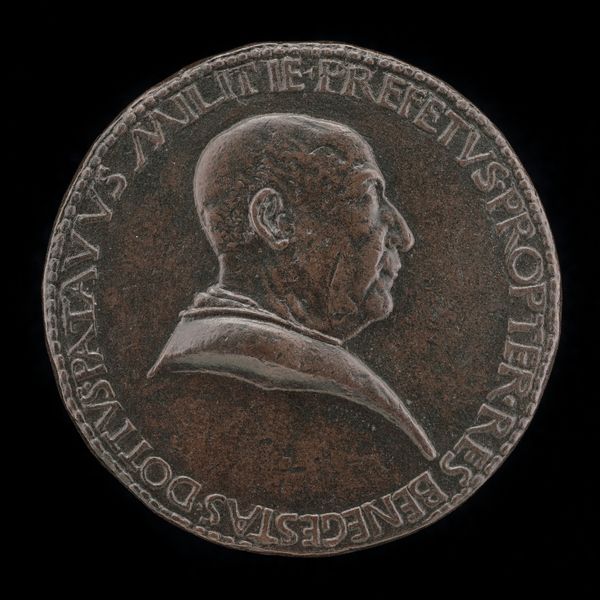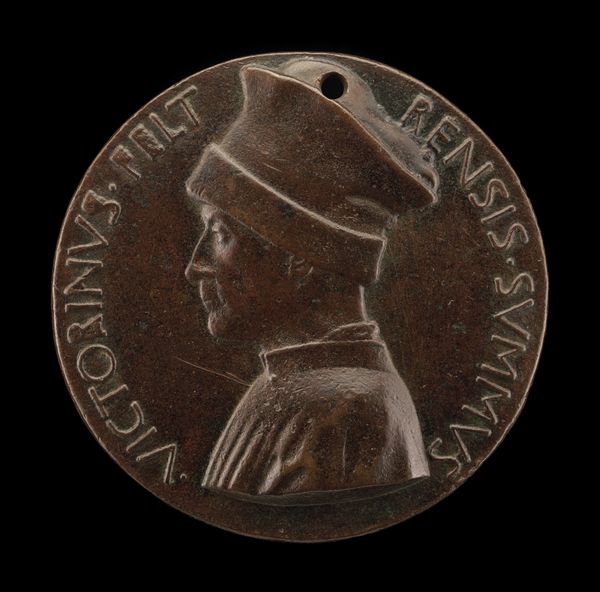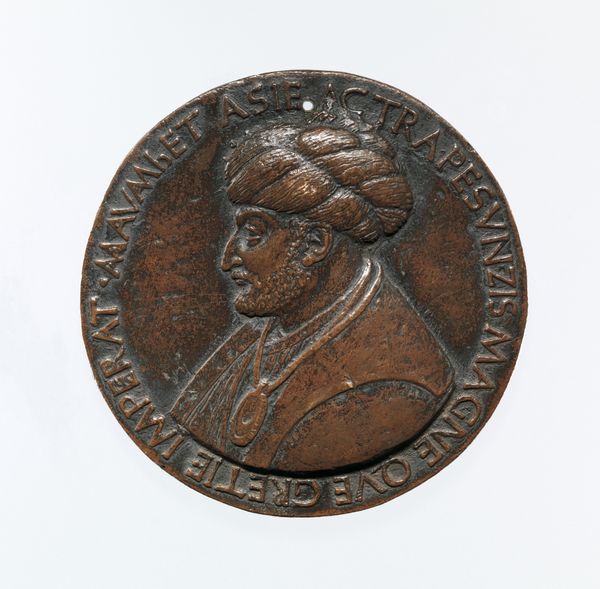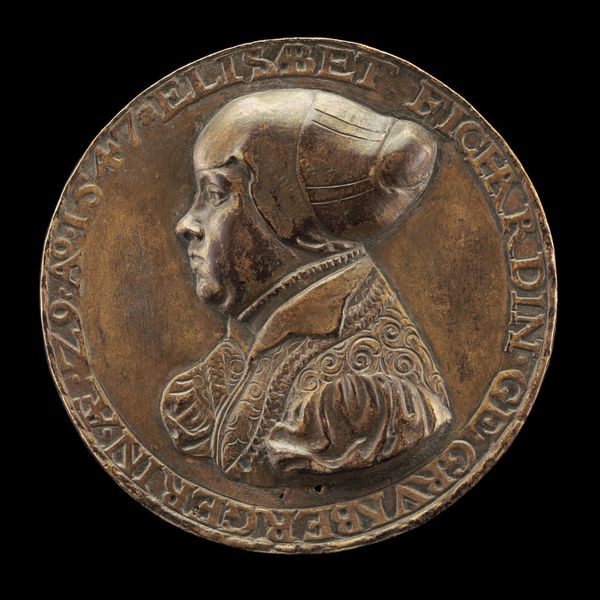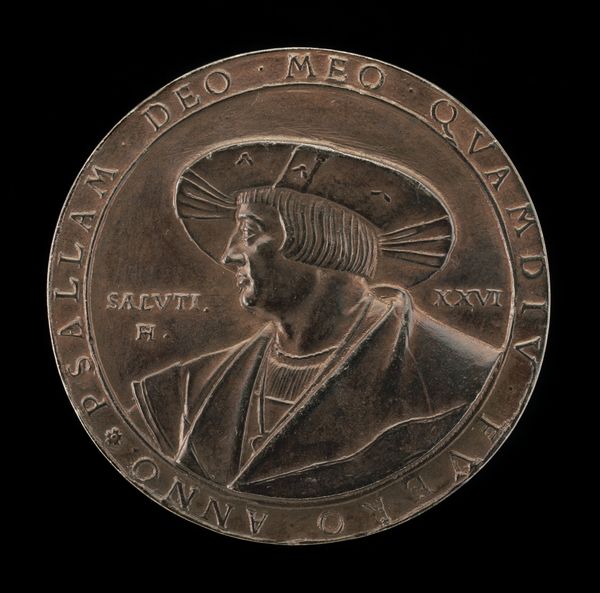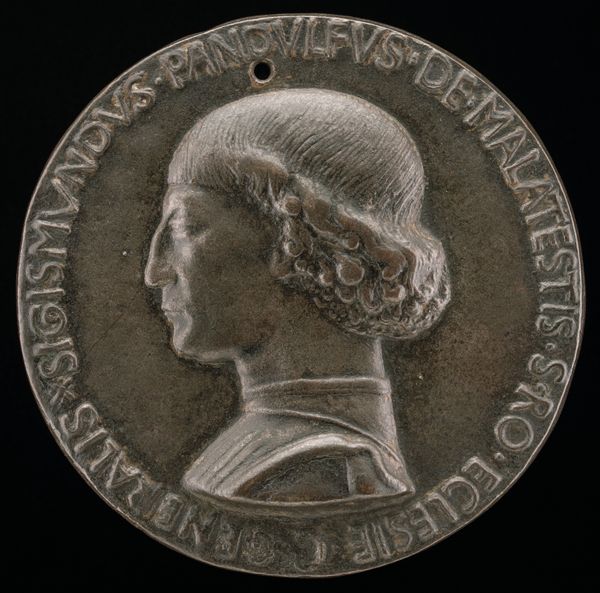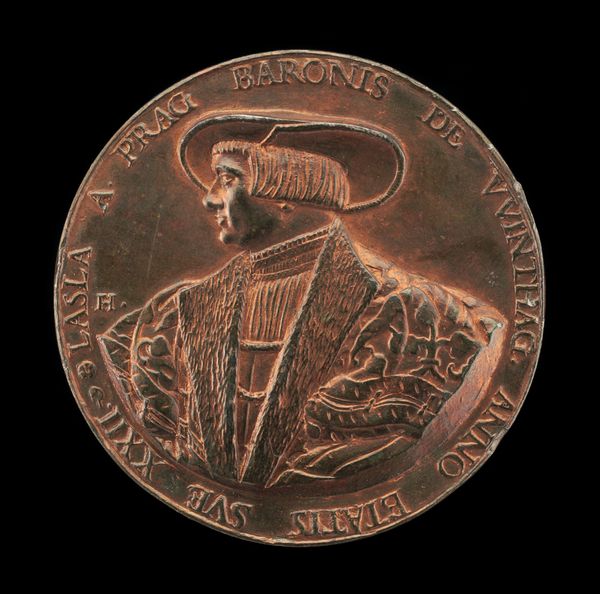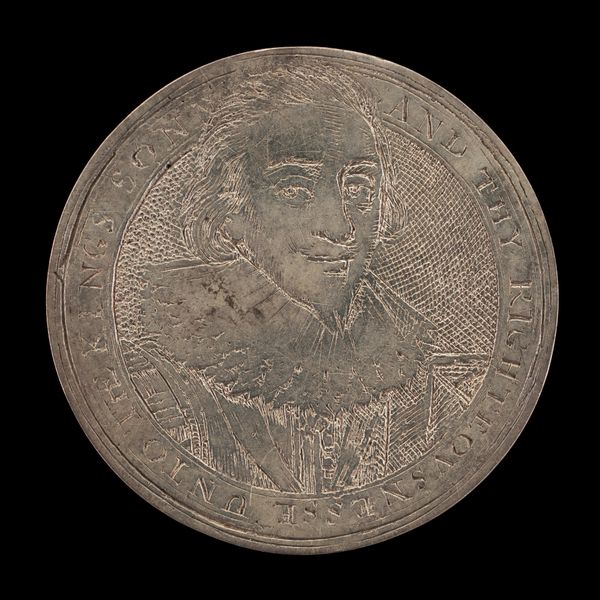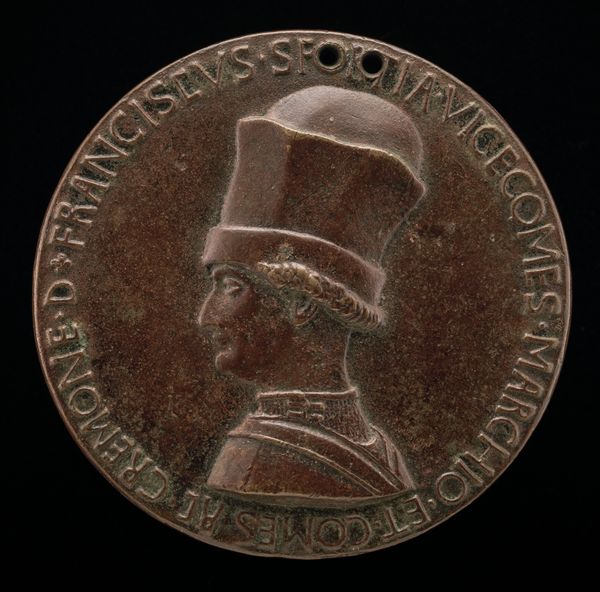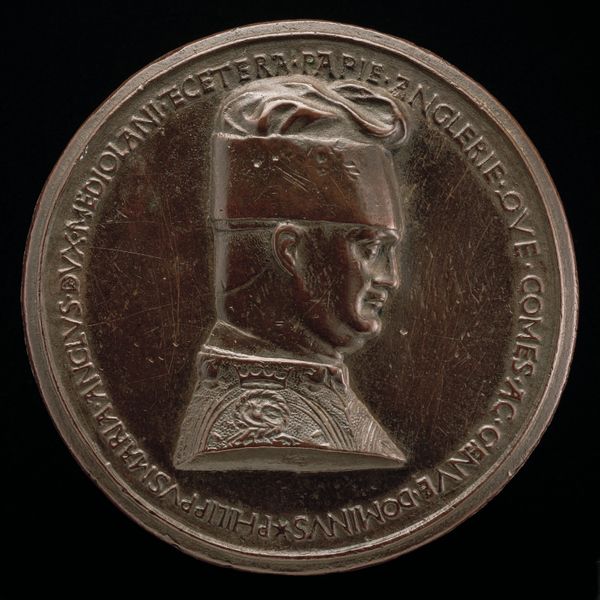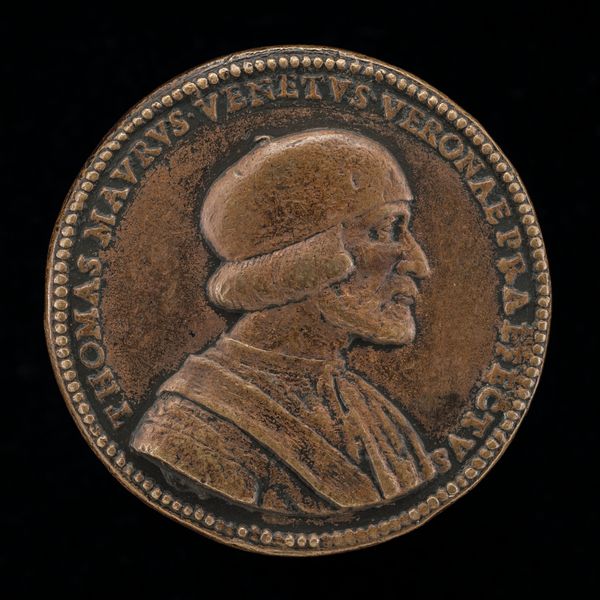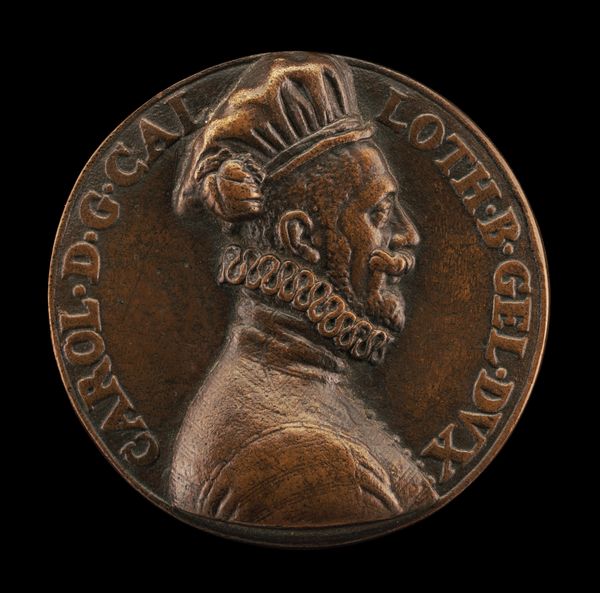![Mehmed II, 1430-1481, Sultan of the Turks 1451 [obverse] by Bertoldo di Giovanni](/_next/image?url=https%3A%2F%2Fd2w8kbdekdi1gv.cloudfront.net%2FeyJidWNrZXQiOiAiYXJ0ZXJhLWltYWdlcy1idWNrZXQiLCAia2V5IjogImFydHdvcmtzLzYxMGJlMmIxLTRjNjUtNDk2Zi1hZjYwLTg1NzM4YjY2MzFlZi82MTBiZTJiMS00YzY1LTQ5NmYtYWY2MC04NTczOGI2NjMxZWZfZnVsbC5qcGciLCAiZWRpdHMiOiB7InJlc2l6ZSI6IHsid2lkdGgiOiAxOTIwLCAiaGVpZ2h0IjogMTkyMCwgImZpdCI6ICJpbnNpZGUifX19&w=3840&q=75)
Mehmed II, 1430-1481, Sultan of the Turks 1451 [obverse] c. 1480
0:00
0:00
bronze, sculpture
#
portrait
#
medal
#
sculpture
#
bronze
#
11_renaissance
#
sculpture
#
italian-renaissance
Dimensions: overall (diameter): 9.44 cm (3 11/16 in.) gross weight: 285.01 gr (0.628 lb.) axis: 6:00
Copyright: National Gallery of Art: CC0 1.0
Editor: This bronze medal, created around 1480 by Bertoldo di Giovanni, depicts Mehmed II, the Ottoman Sultan. It's incredibly detailed for its size. What strikes me most is how it presents him, not just as a ruler, but as an individual. What do you see in this piece? Curator: This medal isn't simply a portrait; it's a complex negotiation of power and identity during a period of intense cultural exchange and conflict. Here, we see a Renaissance artist portraying a figure demonized in the West. The very act of creating this medal can be viewed as a commentary on the relationship between Europe and the Ottoman Empire. What does it mean to monumentalize a figure deemed an "outsider," a threat? Editor: So, the medal itself becomes a statement. Was this portrait intended for a particular audience? Curator: Absolutely. These medals were often diplomatic gifts, exchanged between courts. They served as tangible representations of power, but also tools for forging alliances. Who received this medal, and what messages were they meant to receive? What do we know about the dialogues and power struggles during that era, in the context of Italian politics? Editor: That’s a fascinating way to look at it. It makes me consider the political climate differently. Curator: It forces us to consider beyond aesthetic appreciation and confront history and power relations. The work is evidence of cross-cultural contact in a fraught era, but prompts important questions about representation and the gaze. It can inspire further consideration of cross-cultural dialogues today. Editor: It's definitely given me a lot to think about. Thanks for sharing this perspective!
Comments
No comments
Be the first to comment and join the conversation on the ultimate creative platform.

